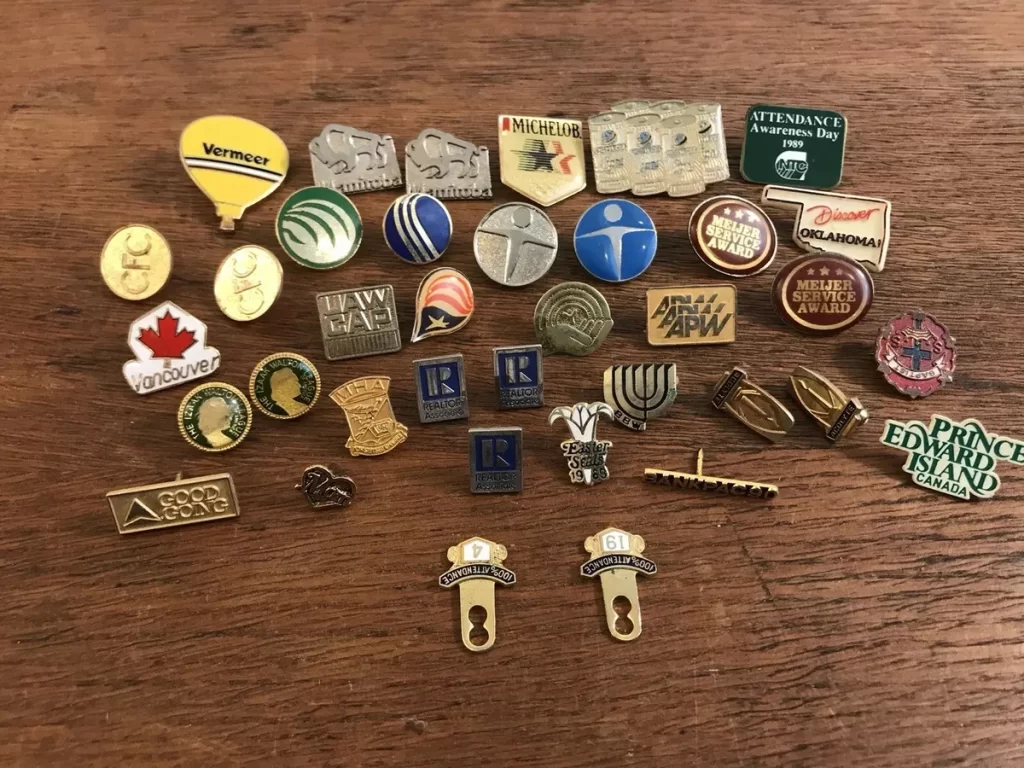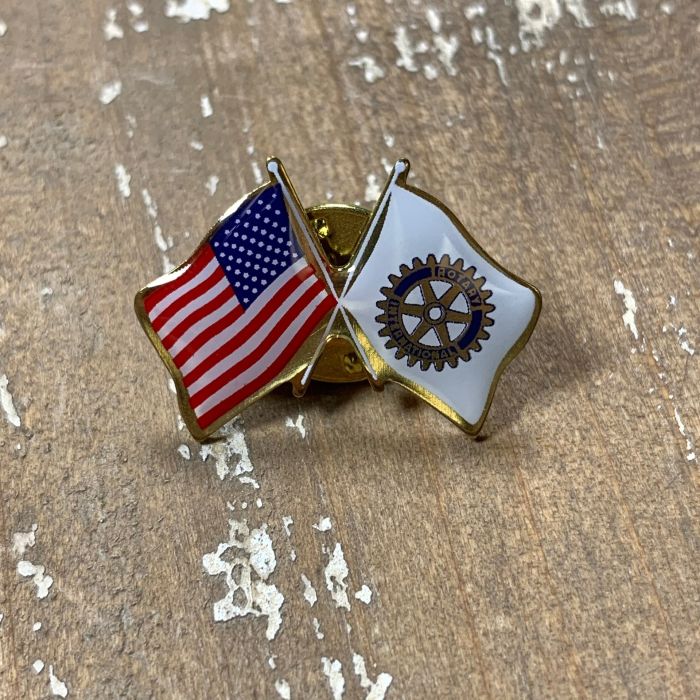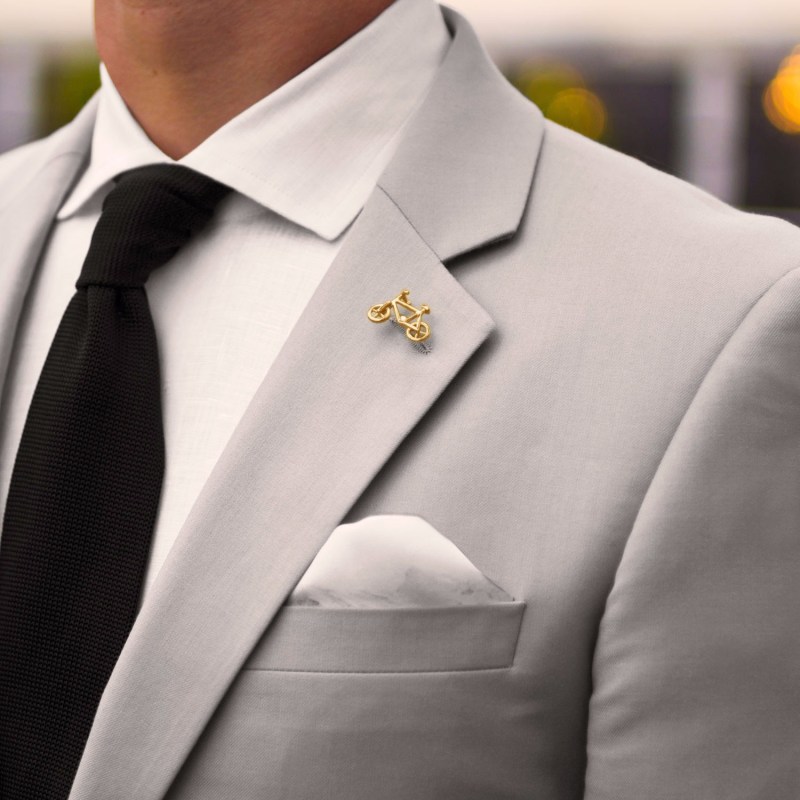From Patriotic Pride to High Fashion: The Evolution of American Lapel Pins
Lapel pins have held a significant place in American culture, symbolizing everything from political allegiance and military honor to high fashion and personal expression. Over the years, the humble american lapel pin has evolved, reflecting the changing tides of history, society, and fashion. This article delves into the fascinating journey of lapel pins from their origins to their current status, examining their various roles and the nuanced transformations they’ve undergone.
Origins of Lapel Pins
Early Beginnings
Lapel pins trace their roots back to the 18th century when they first appeared as rosettes, small circular designs made from ribbon material. These rosettes were often worn to signify political support or to commemorate special events. Although their designs were simple, they carried profound significance.
Military Significance
The practice of wearing lapel pins gained prominence in the military context in the 19th and early 20th centuries. Soldiers were given specific pins to denote their ranks, achievements, and affiliations. These pins were not just decorative pieces; they were symbols of bravery and honor. Veterans proudly wore them to demonstrate their service to the nation.
Lapel Pins in the Political Arena
Campaigns and Elections
The political landscape of the United States has always been a fertile ground for lapel pins. Political campaign buttons and pins made their debut in the 1820s, becoming increasingly sophisticated with each passing election. Candidates and their supporters used these pins to generate rallying cries for their causes. By the mid-20th century, nearly every major political campaign featured an array of buttons and pins promoting slogans, party symbols, and candidate portraits.
Civil Rights Movement
During pivotal moments like the Civil Rights Movement, lapel pins became a powerful medium for expressing unity and solidarity. Pins bearing messages of equality and justice were worn by activists and sympathizers alike, serving as miniature billboards for the cause.
Lapel Pins and American Identity
Patriotism and National Pride
Events such as Independence Day, Veterans Day, and Memorial Day often see Americans donning flag pins to show their patriotism. Especially after national crises or significant events like 9/11, american lapel pin sales surged as people sought ways to express their unity and national pride. The simple act of wearing a flag pin became a silent yet powerful testament to one’s love for the country.
Corporate and Organizational Identity
In the corporate world, lapel pins became a means of fostering unity and identifying employees in large organizations. Special pins would be handed out to mark corporate milestones or employee achievements. These pins often featured the company’s logo or slogan, enhancing brand identity and employee engagement.
Lapel Pins as Fashion Statements
The Intersection of Fashion and Function
In recent years, lapel pins have transcended their conventional roles and made their way into the realm of high fashion. No longer just a ceremonial or political accessory, lapel pins have been embraced by designers and fashionistas for their aesthetic appeal. Fashion houses have revived vintage designs and introduced new collections, seamlessly integrating these pins into contemporary wardrobes.
Customization and Personal Expression
The rise of customization has propelled lapel pins into the arena of personal expression. Today, custom pins can be designed to reflect personal interests, hobbies, or affiliations. Whether it is a pin showcasing a favorite sport, a pop culture icon, or an artistic design, these accessories allow wearers to express their individuality in a subtle yet impactful way.
The Art and Craftsmanship Behind Lapel Pins
Design and Production
Modern lapel pins are marvels of design and craftsmanship. Advances in technology have enabled intricate detailing, vibrant colors, and innovative materials. The production process involves several stages, from conceptual design and mold creation to enameling and polishing. This meticulous process ensures that each pin is a miniature work of art.
Sustainability and Ethical Practices
In an era where sustainability is a pressing concern, many lapel pin manufacturers are adopting eco-friendly practices. Recycled materials and non-toxic dyes are increasingly being used, reflecting a commitment to environmental stewardship. This trend not only enhances the appeal of lapel pins but also aligns with broader societal values.
The Future of American Lapel Pins
As we look ahead to 2024 and beyond, the american lapel pin appears poised for continued evolution. The convergence of tradition, innovation, and personal expression promises to keep these pins relevant for generations to come. Whether as symbols of patriotism, fashion accessories, or tools for social change, lapel pins will undoubtedly remain an integral part of American culture.
Conclusion
The journey of the american lapel pin from its modest beginnings to its current status in high fashion is a testament to its enduring appeal and versatility. These pins have served as powerful symbols of political allegiance, military honor, and national pride, all while evolving into fashionable and customizable accessories. As they continue to adapt to changing trends and societal values, lapel pins promise to remain a cherished element of the American cultural landscape.
FAQs
What are the origins of lapel pins?
Lapel pins originated as rosettes in the 18th century, used to signify political support and commemorate special events. Their use expanded in the military to signify rank and achievements.
How have lapel pins been used in politics?
Lapel pins have been integral to political campaigns since the 1820s, used to promote candidates and slogans. They also played a significant role during movements like the Civil Rights Movement to express solidarity and support.
How do lapel pins symbolize American identity?
Lapel pins are often worn during national holidays and after significant events to express patriotism and national pride. They also serve as badges of identity in corporate settings and organizations.
Why have lapel pins become a fashion statement?
Lapel pins have entered high fashion due to their aesthetic qualities and the rise of customization, allowing individuals to express personal interests and styles through these accessories.
What is the production process for modern lapel pins?
The production of lapel pins involves several stages, including conceptual design, mold creation, enameling, and polishing. The use of advanced technology enables intricate designs and high-quality finishes.
Are lapel pins made sustainably?
Many manufacturers are incorporating eco-friendly practices, using recycled materials and non-toxic dyes, reflecting a commitment to sustainability and environmental stewardship.
For those interested in creating their own custom lapel pins, visit the quote page for a custom lapel pin quote.






